The Corsair SP (Static Pressure), AF (High Airflow) 120/140mm Fan Review
by E. Fylladitakis on November 25, 2015 8:00 AM EST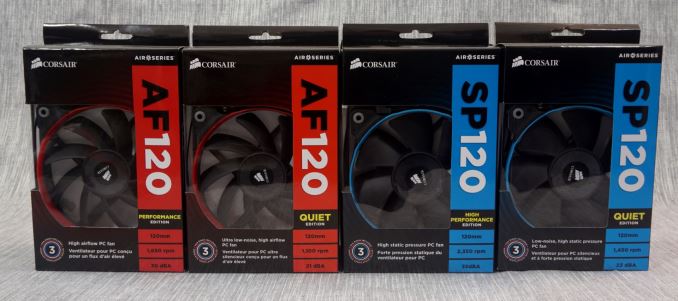
Both the selection and the testing of a fan can be a rather complicated matter. Even if someone knows the exact performance curve of a fan and can make an educated assessment regarding the airflow impedance, parameters such as the quality and noise come into play as well. Through our fan reviews, we will attempt to simplify some of these parameters and assist you with making a proper selection. Today we are looking at several of Corsair's high-end fan offerings in the 120mm and 140mm size from their SP (Static Pressure), AF (High Airflow) and LED ranges.
Introduction
As this is our first proper fan review, our primary focus is to showcase and explain the differences between different kinds of fans, as well as to begin the composing of a performance database. Corsair is our company of choice for our first review, as they offer a variety of cooling fans wide enough and designed for different applications, permitting us to easily showcase the difference between fan designs. Corsair supplied us with six different fan products, which are:
- The AF140 LED White Quiet Edition 140mm fan (High Airflow)
- The SP140 LED White 140mm fan (High Static Pressure)
- The AF120 Performance Edition 120mm fan (High Airflow)
- The SP120 Performance Edition 120mm fan (High Static Pressure)
- The AF120 Quiet Edition 120mm fan (High Airflow)
- The SP120 Quiet Edition 120mm fan (High Static Pressure)
Theoretically Corsair's offerings end up with many degrees of freedom - select AF or SP, select 120mm or 140mm, then select Performance or Quiet, the LED or no LED. This could lead up to 16 different combinations (colors of LED not withstanding), although Corsair picks and chooses so only a few of these to produce.
The Fans
We should start by immediately mentioning that the LED fan versions are not of equal design and performance as the standard versions. We will examine these differences thoroughly, but take care not to confuse the standard with the LED versions of each fan. For example, the AF140 Quiet Edition and the LED version (the AF140 LED White Quiet Edition) do share a similar product number but the non-LED version ends up having significantly better performance specifications.
The LED versions of the AF140 and the SP140 both have black plastic frames with narrowed bezels and semi-transparent blades with a "frost" texture. The wiring and the connector, as well as the provided screws, are all black.
There are four LED lights installed on the frame, in parallel with the plastic engine support bars. We received the white version of the fans but they are also available in blue, red, green and purple.
The AF140 and the SP140 side-by-side look almost identical, with the exception of the fan's blades. The high airflow AF140 has more (11) and narrow blades, capable of creating higher airflow when there is no restriction, while the SP140 has fewer (7) and wider blades, allowing it to create higher pressure and overcome airflow obstacles.
A mere look on the non-LED version of the fans is enough to reveal that they are higher performance designs than the LED versions. The plastic frame is about the same but it is of higher quality and there are hard rubber anti-vibration supports. A colored ring surrounds the intake side of the fan. By default, the SP series fans come with the blue ring and the AF series fans with the red ring installed out of the box, but all three colors (blue, red and white) are included in each package.
The Quiet and Performance versions of both the AF120 and the SP120 120 mm fans are physically identical to each other. Once again, the large differences are between the AF120 and the SP120 version fans, with the former having more and narrow blades and the latter fewer and very wide blades. However, the number, shape and angle of the blades is different than their LED counterparts, which explains their significantly different performance specifications.
Corsair advertises the SP120 and AF120 fans, both the Performance and the Quiet editions, as having a "hydraulic bearing". A hydraulic bearing technically is a sleeve bearing with the bearing and axle immersed and sealed in fluid. Technically, the axle and the sleeving do not come in contact with each other, as the fluid interferes. Unfortunately, we could not capture this in a mere picture, as the destruction of the seal and the removal of the shaft disappeared the fluid within it.
If one looks closely at the specifications of the AF140 LED and the SP140 LED fans, as well as all of the LED versions, they will notice that there is no mention of an "advanced hydraulic bearing". This is because the LED versions of the fans have an entirely different engine. When we broke the seal and removed the impeller, what we found was a self-pumping rifle bearing, which is yet another improvement of the standard sleeve bearing. What the rifle bearing does is that it uses the motion of the fan's axle itself to serve as a pump, constantly moving lubricant around the axle and the bearing. The lubricant is sealed in using a rubber seal at the top of the axle and a permanent seal at the bottom.


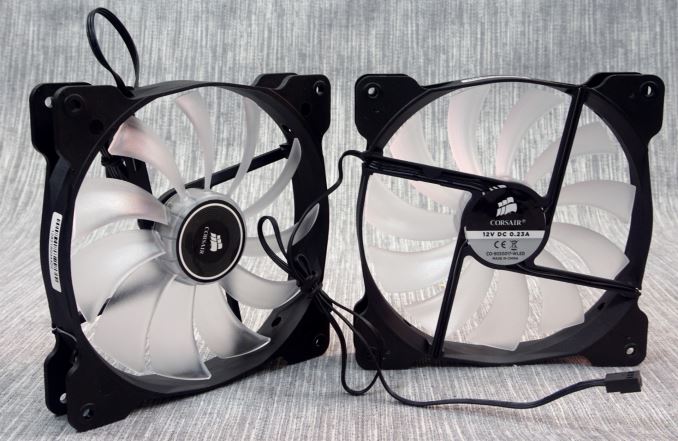

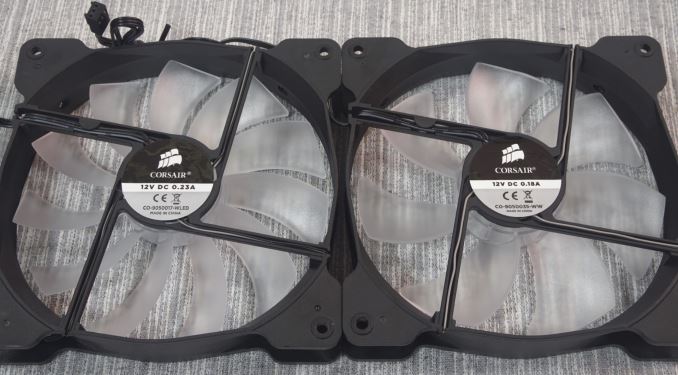
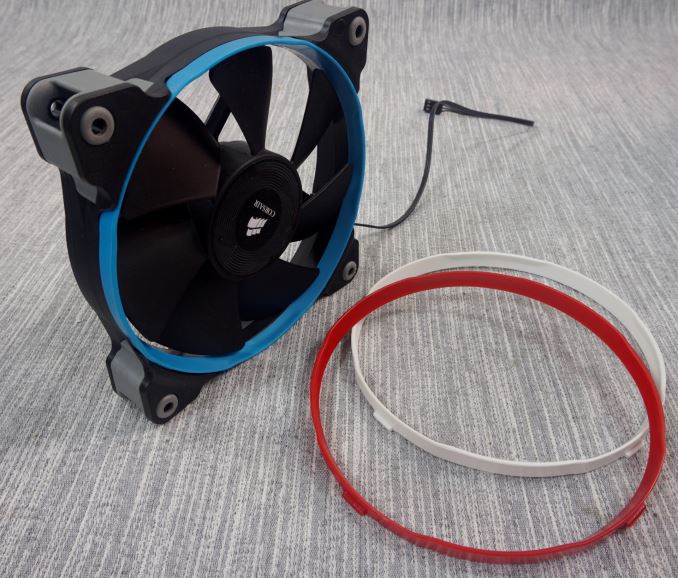

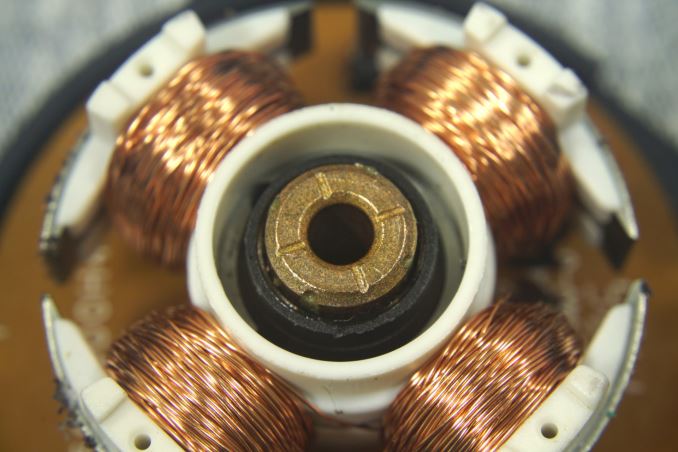
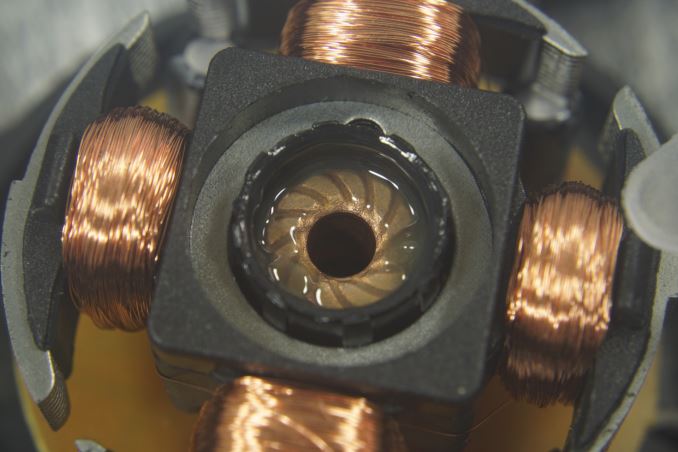
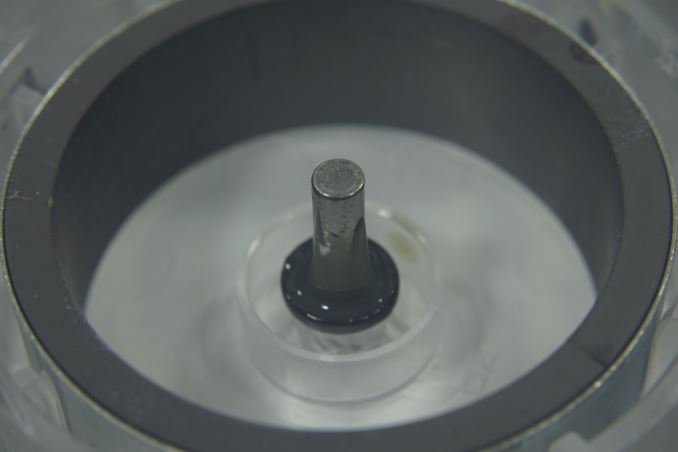








92 Comments
View All Comments
Ian Cutress - Wednesday, November 25, 2015 - link
Sorry, that was my bad. I edited a few things and got mixed up. The definition now reads 'one Pascal is the pressure required to accelerate 1 kg of mass at a speed of 1 meters per second squared per square meter'. Admittedly it's a bit clunky, but it's the best way (from my perspective) to visualize it.nutral - Thursday, November 26, 2015 - link
It kind of says that 1 pascal is still the pressure required to accelerate 1 kg of mass over an area, i would just keep it at 1 pascal is equal to 1 newton per square meter. the gravity acting on 1 kg is 9,81 newton.Arbie - Wednesday, November 25, 2015 - link
If you're starting on fans, check out the old X-Bit Labs site. They had very thorough reviews which helped a lot in balancing noise vs cooling performance for different applications. Here's a link to that section:http://www.xbitlabs.com/articles/coolers/
They haven't published in a year, but fortunately the material is still available. Sad to see them quit...
sheh - Wednesday, November 25, 2015 - link
Thanks for the interesting review.It might help if there was a way to summarize the results in a more condensed manner. I don't have an ideal solution, but perhaps overlay more results in a single graph.
It would help if the voltage was specified in the graphs, and not only the RPM.
Some basic details are missing on the fans: startup voltage, "cruise" voltage, official specs (would be interesting to see even if somewhat arbitrary).
It would be nice to see more detailed noise-vs-RPM/voltage figures.
BTW, parts of some of the graph images are blurry. Anandtech's become much less consistent in the visual looks of graphs, and with occasional hiccups in quality. Also the frequent low quality JPEGs in the homepage make it less polished than it used to be.
britjh22 - Wednesday, November 25, 2015 - link
Great technical analysis as always on this site. I'd just recommend one addition, a real world test. It would be very interesting to take a standardized test bench, let's say an overclocked i7, and have a 240mm AIO solution and an air cooler. It would be great to be able to see the actual effect on the temps by just changing fans, and would give a great data point for user value analysis. Being able to see how a fan statistically performs is great, but the real world effect vs. cost is what I would LOVE to see.lorribot - Wednesday, November 25, 2015 - link
Whilst i love all the technical stuff all the graphs don't really help me decide which fans i should be buying for my case and radiator. What I need is some specifics such as fan a will need to run at x000 rpm to cool a 200w processor to 60C and produce xdb at that point. That would be a repeatable real world test that had some meaning. For case fans you need some form of test for rpm and db for each fan to provide a specific airflow that would be need for something like the above load plus a Graphics card.A separate article on the differences a case design can make to noise and fan performance would be good, especially the difference a grill would have over a perforated sheet metal.
Oxford Guy - Thursday, November 26, 2015 - link
"all the graphs don't really help me decide which fans i should be buying for my case and radiator"What you meant to say is that it doesn't tell you everything you want to know to make informed choices.
Oxford Guy - Thursday, November 26, 2015 - link
One thing that most people don't take into account are the frequencies emitted from fans. I know it's a lot to ask but it could be nice to see the spectrum for fans that are tested. Typically, more decibels in lower frequencies is more pleasant, and less likely to aggravate tinnitus, than more in shriller ones.nutral - Thursday, November 26, 2015 - link
The graphs are a bit confusing, especially with the colours. And did there have to be so many? Impedance in this case is not the correct term, because that applies to the impedance it has to changing air flow, in this case it is resistance. (like in electricity, resistance vs impedance, where impedance is used for AC)I would really rather use Pascal instead of mmH2O and m3/h instead of cfm but i guess that is your choice, having 1 imperial and 1 metric measurement is a bit strange though. 1mmH2O or 9,81 pascal is equal to about 1 meter of air column head. The left legend also should say static pressure instead of just pressure, because the pressure is a compination of static and velocity.
The graphs are called Pressure/flow, using volume is the incorrect term, as it is not talking about the volume but the actual displacement of air.
I was thinking of making a test setup myself for testing fans and their pressure/flow curves. How did you setup your apperatus to restrict air flow and test at different static pressures?
It would be really nice to have a simple module on the website, that puts the graphs of fans and graphs of different components like radiators and cpu coolers over each other to see what the best performance would be.
kalboston - Thursday, November 26, 2015 - link
All in all, an excellent article with very informative information. I am also not use to seeing performance/fan curves presented this way but I am able to understand what the author was trying to convey.Typically in the US, airflow is measured by CFM (Cubic Feet Minute) and In H2O (Inches Of Water Column/Gauge) or M/S (Cubic Meters per Second) and Pascals.
I do agree mixing imperial and SI units is not typical, but there are plenty of applications in the real world that this is done.
I do believe the author tried to perform a controlled test based upon his other articles and methodology. Without knowing the test setup and techniques used, there is always questions that could potentially affect the results. I for one would not have used a pitot tube, most likely a thermal anemometer. A very accurate test setup for airflow is a lot of money for a tech review site that would most likely never recoup the cost.
End result was a great amount of time by the author testing multiple units with many potential variables and presenting the data in a way that they felt was appropriate. For that I am greatly appreciative of, it was an excellently presented piece taking their perspective into account.
I have no college education, although I do have almost 10 years of Biotech and Semi Conductor Cleanroom Certification and Balancing.
I also learned something a long time ago about engineers summed up to a saying I saw "Arguing with an engineer is like wrestling a pig, after awhile your realize they enjoy it"